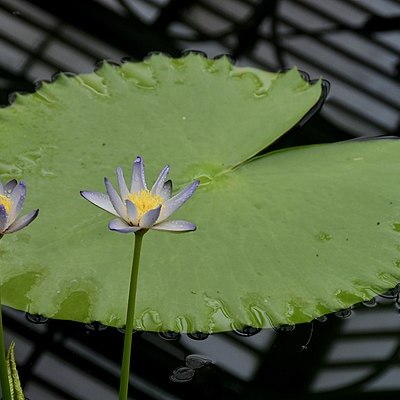Perennial; rhizome globular. stolons absent. Leaf lamina orbicular to elliptic, to 55 cm wide, with regularly spaced teeth to 3 mm long; undersurface glabrous. Flowers to 30 cm above water. Sepals 4, to 4.5 cm long, obtuse, with purple streaks. Petals to 22, oblanceolate to spathulate, obtuse, deep blue or rarely pink or white; space between petals and stamens present. Stamens to c. 300; filaments cylindrical, to 15 mm long; anthers to 5 mm long; appendages vestigial or obsolete. Carpels 7–19; sterile stigmatic lobes vestigial or obsolete. Fruit c. 4 cm diam. Seeds 3–4.5 mm long, 2–3 mm wide, globose to subglobose, with ±continuous rows of short hairs.

